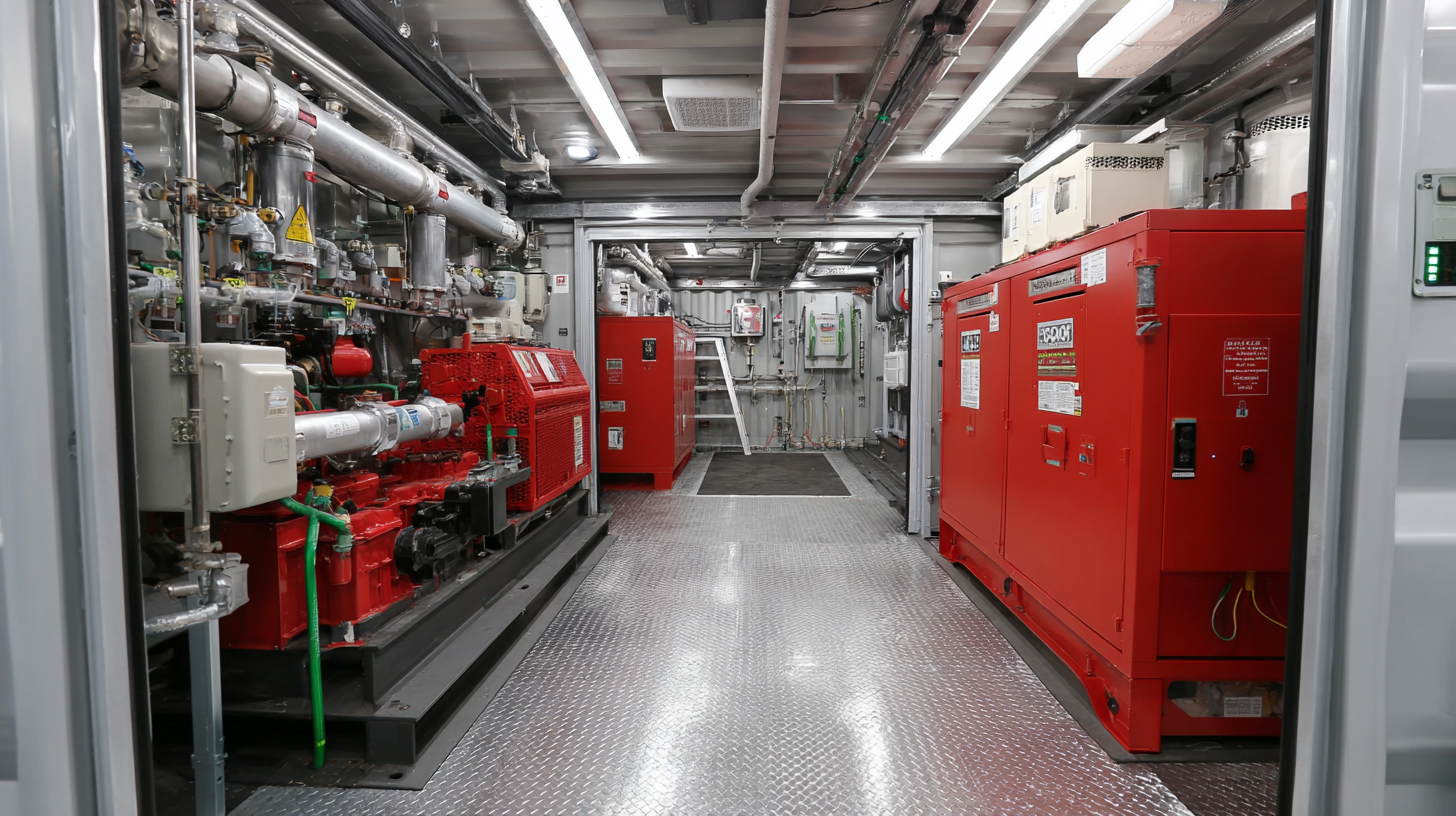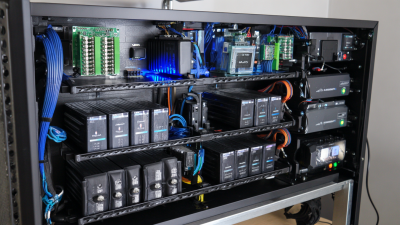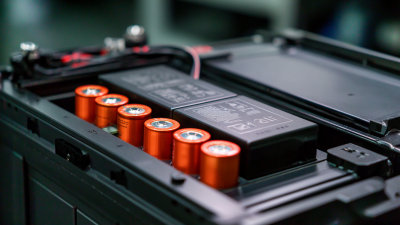
-
Home
-
Company
-
Products
-
News
-
FAQs
-
Blog
-
Contact
-
Phone
-
E-mail
-
Whatsapp
Leave Your Message

In today's rapidly evolving energy landscape, the need for efficient and sustainable power solutions has never been more critical. The 48V 50A Lithium battery system is increasingly popular in various applications, including electric vehicles, renewable energy storage, and industrial power systems. According to a report by the International Energy Agency (IEA), the lithium battery market is expected to grow by over 20% annually, driven by advancements in technology and increasing demand for clean energy.

To maximize the performance and longevity of your 48V 50A Lithium system, understanding the intricacies of battery management, charging cycles, and thermal management is essential. Studies indicate that proper maintenance can extend battery life by up to 30%, ensuring optimal efficiency and reliability in demanding applications. This guide aims to provide best practices and insights to help you harness the full potential of your 48V 50A Lithium battery system for years to come.
Understanding the basics of a 48V 50A lithium battery system is essential for anyone looking to maximize its performance and longevity. Lithium batteries have transformed the energy storage landscape due to their high energy density and efficiency. According to a report by the International Renewable Energy Agency (IRENA), lithium-ion batteries can achieve over 90% round-trip efficiency, making them ideal for various applications, including renewable energy systems and electric vehicles. With a 48V system, you gain higher voltage, which allows for greater power delivery and reduced current, ultimately leading to lower resistive losses.
**Tips:** To enhance the lifespan of your lithium battery, consider implementing regular maintenance checks, which can prevent common issues such as overheating and cell imbalance. Keeping the battery in a temperature-controlled environment can significantly extend its life beyond the typical 5 to 15 years cited by the U.S. Department of Energy.
Additionally, using a Battery Management System (BMS) can optimize performance by monitoring voltage and current levels, which can help prevent overcharging and excessive discharging—two critical factors that can drastically shorten battery life. A 2022 study by the Energy Storage Association highlights that systems employing a sophisticated BMS can see performance improvements of up to 30%.
| Parameter | Value | Notes |
|---|---|---|
| Nominal Voltage | 48V | Standard operating voltage |
| Maximum Current | 50A | Peak current capability |
| Battery Capacity | 100Ah | Voltage x Capacity = 4800Wh |
| Cycle Life | 2000-5000 cycles | Depends on usage and charging conditions |
| Operating Temperature Range | -20°C to 60°C | Performance may degrade outside this range |
| Charger Type | CC/CV (Constant Current/Constant Voltage) | Recommended charging method |
| Depth of Discharge (DoD) | 20%-80% | Optimal range for longevity |
To maximize the performance and longevity of your 48V 50A lithium battery system, it is essential to pay close attention to best practices for charging and discharging. Lithium batteries, especially those utilizing lithium iron phosphate (LiFePO4) technology, are known for their safety and stability, but improper handling can lead to unsafe situations, as demonstrated by recent incidents involving battery charging cabinets catching fire. Therefore, understanding the appropriate charging techniques is crucial.
Research indicates that charging lithium batteries using the correct method not only promotes safety but also enhances performance. Fast charging may seem convenient, but it can exert stress on battery cells, leading to premature degradation. Experts suggest following specific charge rate guidelines—typically between 0.5C and 1C—to ensure optimal battery health. For instance, fully discharging a lithium battery can harm its lifespan, while partial discharges between 20% and 80% are recommended to prolong its operational life.
Moreover, regular monitoring of battery conditions is advocated to prevent overcharging, which can increase the risk of thermal runaway, as seen in several recent safety reports. Utilizing advanced management systems can assist in maintaining optimal charge levels and safety parameters, thus maximizing the overall efficiency and durability of the battery system.
Effective temperature management is crucial for maximizing the performance and longevity of a 48V 50A lithium battery system. According to a report by the Department of Energy (DOE), lithium-ion batteries tend to perform optimally in a temperature range of 20°C to 25°C (68°F to 77°F). Operating outside this range can lead to accelerated aging, reduced capacity, and elevated risks of thermal runaway. It is essential to maintain an environment that mitigates extreme temperatures, both hot and cold, to ensure consistent performance.

Implementing effective thermal management strategies can significantly extend battery life. A study published in the Journal of Power Sources indicated that maintaining a stable temperature could increase the battery cycle life by up to 40%. Techniques such as passive cooling, active thermal management systems, and incorporating heat sinks can help regulate battery temperatures in various operating conditions. Continuous monitoring and maintaining optimal temperatures not only enhance energy efficiency but also improve the reliability of the battery system, ultimately leading to cost savings and better overall performance.
To enhance the lifespan and efficiency of your 48V 50A lithium battery system, implementing a regular maintenance routine is essential. According to the Battery University, lithium batteries have the potential for over 2,000 charge cycles when properly maintained. One key aspect of maintenance is ensuring that the battery stays within the recommended temperature range of 20°C to 25°C (68°F to 77°F). Operating outside this range can significantly shorten battery life; for instance, every 10°C increase in temperature can halve the lifespan of the battery.
Another crucial maintenance tip is to regularly check and balance the individual cell voltages. Imbalances can lead to reduced capacity and even premature failure. A study by the International Journal of Energy Research found that maintaining cell voltage within 0.1V of each other can optimize performance and prolong service life. Additionally, it's important to keep the battery terminals clean and free from corrosion, as poor connections can lead to inefficiencies and overheating. By adhering to these maintenance practices, users can significantly improve both the performance and longevity of their lithium battery systems.
Monitoring a 48V 50A lithium battery system is crucial for ensuring optimal performance and extending its longevity. Regularly checking the state of charge (SOC) and state of health (SOH) can prevent overcharging and deep discharging, which are common issues that can significantly reduce battery life. Implementing battery management systems (BMS) can automate this monitoring process, providing real-time data on temperature, voltage, and current levels. Analyzing this data allows users to identify trends and make informed decisions about maintaining the battery's optimal operating conditions.

Troubleshooting common issues in battery systems is essential for preventing potential failures. One of the most frequent problems is battery imbalance, which occurs when individual cells within the battery pack discharge at different rates. This can lead to reduced capacity and uneven wear. Regular balancing procedures and using a high-quality BMS can help mitigate this issue. Additionally, monitoring for signs of overheating or physical damage is vital; addressing these concerns promptly can safeguard against catastrophic failures and enhance the overall durability of the battery system. By staying vigilant and proactive, users can ensure their 48V 50A lithium batteries operate efficiently over the long term.





